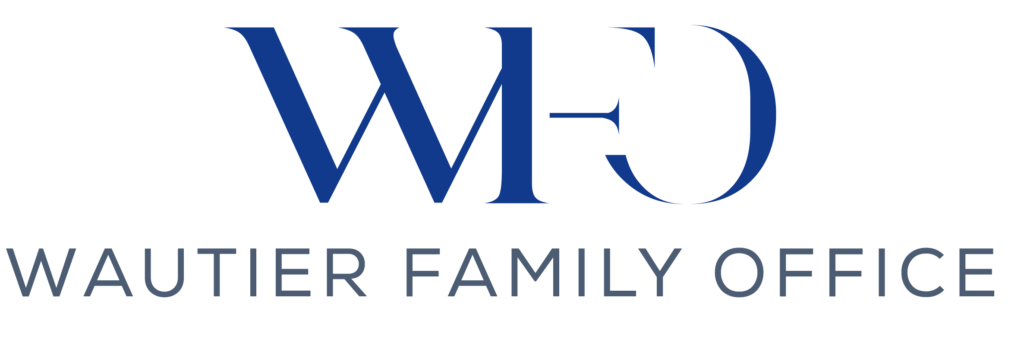How does monetary policy control inflation? What tools do central banks use to manage inflation? Why is inflation targeting central to economic stability?
Inflation affects every facet of our daily lives—from rising grocery bills to declining purchasing power—and central banks play a vital role in keeping it in check. This blog explores how monetary policy serves as a key lever to manage inflation, focusing on the strategic use of interest rates, open market operations, and forward guidance to influence economic behavior and price stability.
The post delves deep into different types of inflation—demand-pull, cost-push, and built-in—unpacking the real-world causes behind price surges and how central banks respond. It also examines the challenges policymakers face, such as time lags, external shocks, and balancing growth with price control, all within the evolving landscape of global inflation dynamics.
Few factors affect our lives as clearly as the change in inflation. But our interest in it ebbs and flows with how viscerally it is “felt” at any given time. For example, the number of conversations I have had about the topic in the last five years has been far greater than ever.
That’s a natural result of an inflation rate that went from existing at the sleepy, barely registering level of 1% – 3%, to a sudden spike above 9% in much of the Western world. For decades, the natural effects of globalization had provided a real buffer to that kind of sudden rise in prices, with capital flowing freely to the lowest cost providers of goods and services. A 9% change in a year is the kind of sudden change that will result in a noticeable change that is “felt” when paying for the weekly grocery shop, a cup of coffee, or an annual insurance premium.
As awareness of and pain felt by a high-inflation environment rose, the natural question on the minds of many was, “What can we do about this?” It’s a question that macroeconomists and policymakers have been pondering for decades.
Monetary policy is one of the tools that has been developed, deployed, and refined over time to control inflation. The term refers to the set of actions taken by a central bank to manage a country’s money supply and interest rates in order to achieve specific macroeconomic goals. Monetary policy seeks to ensure price stability (as measured by inflation), maintain a stable currency, and support sustainable economic growth.
In contrast, fiscal policy involves government spending and taxation. Monetary policy operates through the financial system, using levers such as interest rates and money supply to influence economic activity. Central banks act as the architects of this system, constantly adjusting policies to smooth out inflation, unemployment, and stagnation cycles. Their influence is subtle but powerful: while they don’t directly set consumer prices, their policies shape the environment where inflation rises or falls.
Table of Contents:
Central Banks and Their Mandates
The Two Types of Monetary Policy
Main Tools Used to Control Inflation
Challenges in Controlling Inflation
Understanding Inflation
For all the commentary and conversation about inflation in recent years, it still strikes me that we sometimes discuss this topic without a common understanding of what we are referring to. Let’s therefore settle on a common framework for understanding inflation here.
Inflation refers to the rate at which the general level of prices for goods and services rises. The natural effect of this on participants in the economy (individuals, families, businesses) is a decline in the purchasing power of money. When inflation occurs, each currency unit buys fewer goods and services than before. Here is the nuance: while modest inflation is often seen as a natural feature of a growing economy, excessive or poorly controlled inflation can erode economic confidence, disrupt financial planning, and widen social inequality. Or put more bluntly: high, uncontrolled inflation makes us poorer.
To track inflation, economists and policymakers rely on several key measures, the most common being the Consumer Price Index (CPI). This index reflects the average change over time in the prices households pay for a defined basket of goods and services, which typically includes food, housing, clothing, healthcare, and transportation. Some components of the CPI, such as food and energy, are highly volatile. Because of this, central banks often look to another measure known as core inflation, which excludes those categories. Core inflation is considered a more stable indicator of underlying price trends and is particularly useful when assessing long-term monetary policy decisions.
Recent years have highlighted how inflation can quickly become a central concern for both policymakers and the public. The annual CPI inflation rate in the United States reached 9.1 percent in June 2022, the highest level since 1981, largely driven by rising energy prices and post-pandemic supply disruptions.
Understanding the causes of inflation is essential to crafting effective responses. Economists generally categorize inflation into three broad types:
- demand-pull
- cost-push
- built-in inflation
Demand-pull inflation occurs when aggregate demand in the economy exceeds aggregate supply. This typically happens during periods of strong economic growth, when low unemployment and rising wages give consumers greater purchasing power. The resulting surge in demand for goods and services outpaces producers’ ability to respond, driving prices upward. Following the COVID-19 pandemic, for instance, large-scale fiscal stimulus programs in countries like the United States and Europe significantly boosted household spending at a time when global supply chains were still under strain. This mismatch between demand and supply exemplified classic demand-pull inflation.
Cost-push inflation, on the other hand, arises when the cost of production inputs—such as wages, energy, or raw materials—increases. These higher input costs are then passed on to consumers through higher prices. A vivid example occurred in 2021 and 2022, when oil prices surged by more than 50 percent. The increase in energy costs fed through into transportation and production expenses across sectors, ranging from agriculture to manufacturing, contributing to higher prices globally. This form of inflation is particularly difficult to manage through monetary policy, as it is often driven by external shocks beyond a central bank’s control.
The third category, built-in inflation, is sometimes called the wage-price spiral. This occurs when “baked in” rising prices lead workers to demand higher wages, which in turn increase business costs and cause further price rises. This self-reinforcing cycle can become entrenched, especially in economies with poorly anchored inflation expectations. During the 1970s, many advanced economies experienced persistent inflation, even in periods of low growth and high unemployment, largely due to these dynamics.
Controlling inflation is important because of its broad and often uneven effects on the economy. Rising prices erode the purchasing power of households, especially when wages fail to keep pace. Lower-income families are typically hit the hardest, as a greater proportion of their income goes toward essentials like food, rent, and utilities.
Central Banks and Their Mandates
Now we can delve further into the interaction between inflation and those seeking to tame it: the central banks.
Central banks are independent institutions charged with safeguarding the economic health of their respective nations. Their mandates often include ensuring price stability, supporting full employment, and maintaining the overall stability of the financial system. While the emphasis varies by country, the commitment to controlling inflation is nearly universal.
To achieve these goals, central banks use a distinct set of tools separate from the powers of elected governments. Unlike fiscal policy, which is politically driven, monetary policy aims to be apolitical and based on economic fundamentals. Independence and credibility are key to an effective, high-functioning central bank.
In carrying out their mandates, central banks monitor a vast range of data—from labor market trends to international capital flows—and respond with measured interventions designed to influence interest rates, credit availability, and expectations. Their job is part science, part judgment, and often involves making difficult trade-offs in real time.
Inflation can trigger interest rate hikes by central banks, which aim to cool the economy by making borrowing more expensive. This can slow consumer spending and corporate investment, dampening economic growth in the process. When inflation expectations become unmoored, price signals in the market may become distorted, leading to resource misallocation and reduced productivity. Asset markets can also be affected, as inflation pressures often lead investors to reassess risk and return, prompting volatility in equities, bonds, and housing.
Inflation also has profound distributional effects. While those who own assets such as real estate or equities may benefit from inflation-driven price appreciation, those with fixed incomes or few assets may struggle to maintain their standard of living. These asymmetries can widen existing inequalities and place political pressure on governments and central banks to act decisively.
Most central banks, therefore, aim to keep inflation within a defined target range, which typically lands at around two percent per year. This is seen as conducive to steady economic growth, stable employment, and healthy investment. Maintaining stable prices while also supporting employment and growth lies at the heart of modern monetary policy.
The Two Types of Monetary Policy
Monetary policy can be generally divided into two categories: expansionary and contractionary. Each is deployed as a response to specific economic conditions that exist, or that are emerging, much as the captain of a ship might adjust course in response to actual or developing changes in the weather.
Expansionary monetary policy is used when the economy is slowing, unemployment is high, or deflation (a general price decline) is a risk. In these circumstances, central banks increase the money supply and reduce interest rates to stimulate borrowing, investment, and consumption. The goal is to jumpstart economic activity and prevent a downward spiral of low demand and declining prices.
Conversely, contractionary monetary policy is employed when inflation is too high. In this scenario, central banks tighten the money supply and raise interest rates to discourage excessive borrowing and spending. The aim is to cool the economy, slow down price increases, and re-anchor inflation expectations.
Both forms of monetary policy seek to maintain equilibrium, but while one fuels growth, the other applies the brakes to prevent overheating.
Main Tools Used to Control Inflation
The frameworks for deploying monetary policy can be simply understood as belonging to one of two categories. However, the tools used to achieve the goals of these differing frameworks are more diverse.
Central banks can leverage a suite of powerful tools to manage inflation effectively. These instruments operate through financial markets and commercial banks, influencing economic behavior in indirect but profound ways.
Interest Rate Adjustments are perhaps the most visible and widely discussed. By raising the benchmark interest rate (often called the policy rate), central banks make borrowing more expensive and saving more attractive. This cools consumer spending and business investment, reducing pressure on prices. Conversely, lowering rates encourages economic activity when inflation is subdued. The US Federal Reserve, the European Central Bank, the Bank of England, and their international peers are responsible for setting these rates, and changes in them are discussed widely in the lead-up to and after any decision. Recently, political leaders have also increasingly opined on the appropriateness of interest rates and central bank decision-making.
Open Market Operations (OMOs) are less visible and involve the central bank buying and selling of government securities as an active participant in the market. When a central bank sells bonds, it pulls money out of circulation, reducing liquidity and tightening financial conditions. This can help curb inflation. When it buys bonds, it injects liquidity into the economy, stimulating activity.
Similarly, a relatively unknown policy called reserve requirements dictates how much capital commercial banks must hold in reserve versus how much they can lend out. Raising the reserve ratio limits the amount of money banks can create through lending, slowing down credit expansion and helping to control inflation.
Forward Guidance is a more modern tool. It involves the central bank clearly communicating its future policy intentions, thereby shaping market expectations and influencing behavior in advance. If businesses and consumers believe inflation will remain controlled, they are more likely to make stable, long-term financial decisions.
Inflation Targeting Framework
As discussed earlier, most modern central banks have converted to operate within an inflation-targeting framework. This involves setting a clear and publicly stated inflation goal of around 2% per year and designing monetary policy to achieve that target over the medium term.
The logic is twofold: first, moderate inflation supports stable growth, and second, clearly defined targets increase the credibility and transparency of central bank actions. Markets, businesses, and consumers are more likely to trust monetary policy when the objectives are explicit and consistent.
Inflation targeting also allows for flexibility. Central banks often use a range or band rather than a fixed number, considering both short-term fluctuations and long-term trends. Success depends on both technical execution and communication: if the public trusts that inflation will remain on target, that trust becomes a self-reinforcing stabilizer.
Challenges in Controlling Inflation
Despite their sophisticated tools and frameworks, central banks face formidable challenges in managing inflation. One of the biggest is the time lag between when policy is enacted and when it takes full effect in the real economy. In practice, this process often takes several months or even years.
External shocks further complicate the task. Supply chain disruptions, commodity price spikes, or geopolitical tensions can all drive inflation from the outside and beyond the reach of domestic policy tools. In such situations, central banks must decide whether to wait for conditions to normalize or intervene more aggressively, knowing the risk of overcorrecting.
Additionally, monetary authorities must balance inflation control with broader economic goals such as full employment and financial stability. Raising rates too quickly can curb inflation, but stifle job creation and investment. Conversely, keeping rates too low can fuel asset bubbles or excessive debt.
Finally, data limitations and the inherent uncertainty of economic forecasting present constant obstacles. Policymakers rely on models and projections that are vulnerable to error, especially in times of rapid change or crisis. Despite our deep, rich data sets and predictive capability, economies are still the product of billions of decisions undertaken at the level of individuals, aggregated through a specific social and economic system, and remain highly unpredictable and volatile.
Key Takeaways
Monetary policy is one of the most powerful tools available to guide an economy toward long-term stability and prosperity. Central banks play a critical role in ensuring that inflation remains predictable and manageable through the careful management of the money supply and interest rates.
While the challenges span from external shocks to data imperfections, the importance of a proactive and transparent approach cannot be overstated. By understanding the dynamics of inflation and deploying the right tools at the right time, central banks foster the conditions necessary for sustainable growth, employment, and economic resilience.
Monetary policy discipline offers a clear, stated anchor on which the participants’ confidence in an economy can be built. The goal? No less than preserving the value of money and, by extension, protecting the well-being of individuals and economies alike.




